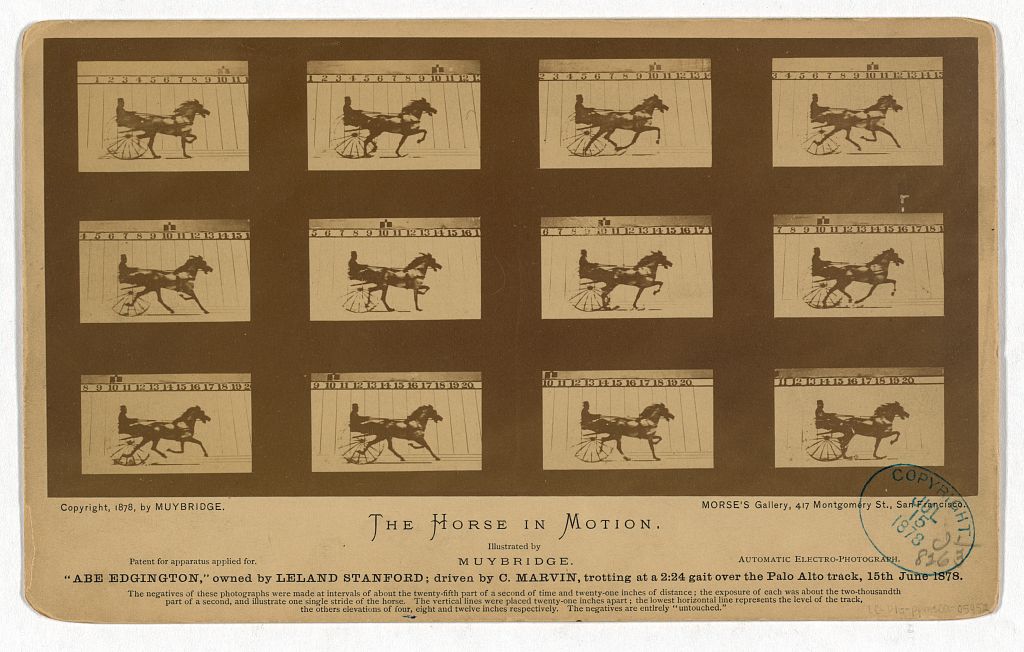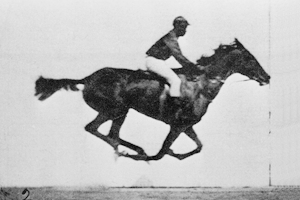The Horse in Motion by Eadweard Muybridge 1878 - early film technology
The Horse in Motion by Eadweard Muybridge is a groundbreaking achievement in the history of photography and film technology. Muybridge, a British-American photographer and inventor, was born in 1830 and became famous for his photographic studies of motion. In 1878, Muybridge was commissioned by Leland Stanford, a wealthy horse breeder, to prove that a horse had all four hooves off the ground at the same time while running. Muybridge accepted the challenge and used his photographic knowledge and experience to capture the horse in motion.
Muybridge's project involved the use of multiple cameras, each with a fast shutter speed, which were triggered by tripwires as the horse ran past. The cameras were positioned along a track, and as the horse ran, it broke the tripwires, which triggered the cameras to take a series of photographs. Muybridge then used the resulting photographs to produce a series of images showing the horse in motion, proving that a horse could indeed have all four hooves off the ground at the same time.
The Horse in Motion by Muybridge was not only a scientific breakthrough but also a technological one. Muybridge's innovative use of multiple cameras and tripwires paved the way for the development of motion picture technology. His work inspired others to continue to explore the possibilities of capturing and studying motion, leading to the creation of early motion picture cameras and projectors.
Muybridge's photographs of the horse in motion were also important for the development of the theory of animation. Prior to Muybridge's work, animators relied on their own observations and imagination to create movement in their drawings. Muybridge's photographs provided them with a reference for studying and creating realistic movement, revolutionizing the art of animation.
The Horse in Motion by Muybridge remains an important and influential work in the history of photography and film technology. Muybridge's pioneering use of multiple cameras and tripwires to capture motion set the stage for the development of motion picture technology and established the foundation for the study of movement. His work has inspired generations of artists, animators, and photographers, and continues to be a source of inspiration and wonder.
In conclusion, The Horse in Motion by Eadweard Muybridge is a seminal work in the history of photography and film technology. Muybridge's innovative use of multiple cameras and tripwires to capture motion revolutionized our understanding of movement and set the stage for the development of motion picture technology. Muybridge's legacy continues to inspire new generations of artists and photographers, and his work remains a testament to the power of human curiosity and creativity.




.jpg/1280px-thumbnail.jpg)

Comments
Post a Comment